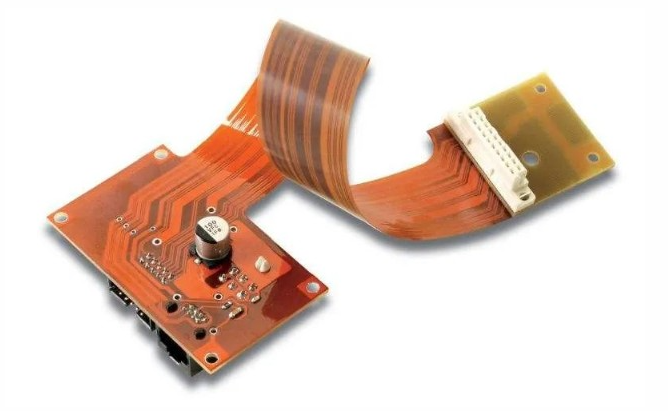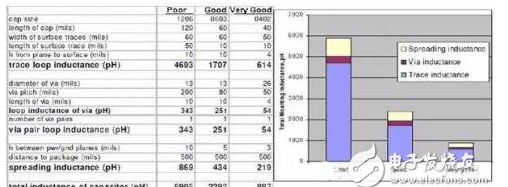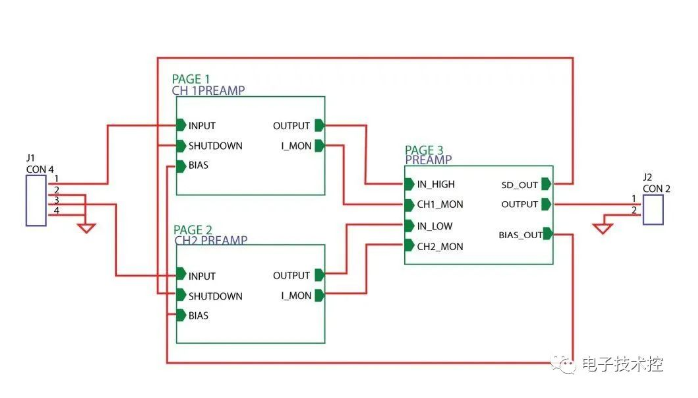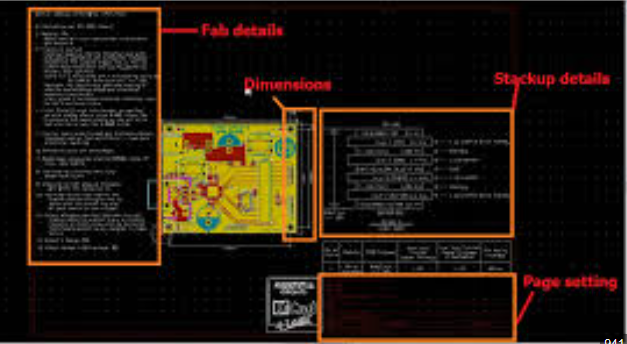Ads pcb high speed
Optimizing High-Speed PCB Design for Effective Ad Performance
In the realm of modern electronics, the demand for high-speed printed circuit boards (PCBs) has surged, driven by the need for faster data processing and transmission. As advertising technologies evolve, the performance of these high-speed PCBs becomes crucial in ensuring effective ad delivery and processing.
Optimizing high-speed PCB design is therefore essential for enhancing the performance of advertising systems, which rely heavily on rapid data handling and seamless connectivity.
To begin with, understanding the fundamental principles of high-speed PCB design is imperative.
High-speed PCBs are characterized by their ability to handle signals with fast rise times and high frequencies. This capability is vital for advertising systems that require quick data processing to deliver real-time content. The design of such PCBs must account for signal integrity, which involves maintaining the quality of the signal as it travels through the board. Poor signal integrity can lead to data loss or corruption, adversely affecting ad performance.
One of the primary considerations in optimizing high-speed PCB design is the layout.
The layout must be meticulously planned to minimize signal path lengths and avoid unnecessary bends, which can introduce signal reflections and degrade performance.
Additionally, the placement of components should be strategic, ensuring that critical components are positioned to reduce electromagnetic interference (EMI) and crosstalk. By doing so, designers can enhance the reliability and efficiency of the PCB, thereby improving the overall performance of advertising systems.
Moreover, the choice of materials plays a significant role in high-speed PCB design.
Materials with low dielectric constants and low loss tangents are preferred, as they facilitate faster signal propagation and reduce signal attenuation. This is particularly important in advertising systems where data must be transmitted quickly and accurately.
Furthermore, the use of advanced materials can help in managing thermal performance, which is crucial for maintaining the stability and longevity of high-speed PCBs.
Transitioning to the aspect of power distribution, it is essential to ensure that the power delivery network (PDN) is robust and efficient. A well-designed PDN minimizes voltage fluctuations and provides stable power to all components, which is critical for maintaining the performance of high-speed circuits.
Techniques such as using multiple power and ground planes, as well as incorporating decoupling capacitors, can significantly enhance the power integrity of the PCB.
In addition to these technical considerations, simulation and testing are indispensable in the optimization process. Simulation tools allow designers to model and analyze the behavior of high-speed PCBs under various conditions, identifying potential issues before physical prototypes are built. This proactive approach not only saves time and resources but also ensures that the final design meets the desired performance criteria. Testing, on the other hand, provides empirical data to validate the design, ensuring that the PCB performs as expected in real-world scenarios.
In conclusion, optimizing high-speed PCB design is a multifaceted process that requires careful consideration of layout, materials, power distribution, and validation techniques. By addressing these aspects, designers can significantly enhance the performance of advertising systems, ensuring that they operate efficiently and effectively.
As the demand for high-speed data processing continues to grow, the importance of well-designed PCBs in the advertising industry cannot be overstated. Through meticulous design and rigorous testing, high-speed PCBs can be optimized to meet the ever-evolving needs of modern advertising technologies.
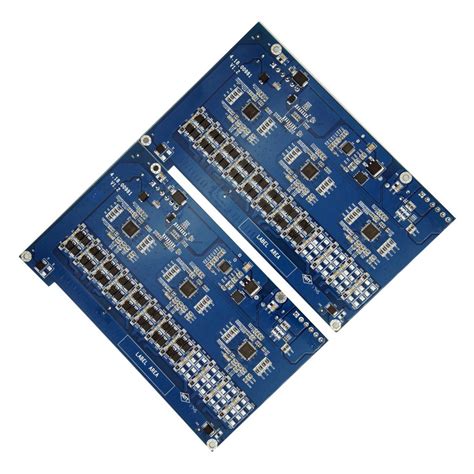
Key Challenges in High-Speed PCB Design for Advertising Technologies
In the rapidly evolving world of advertising technologies, the demand for high-speed printed circuit boards (PCBs) has become increasingly critical. As digital advertising platforms continue to expand, the need for faster data processing and transmission has driven the development of high-speed PCBs. However, designing these advanced circuits presents a myriad of challenges that engineers must navigate to ensure optimal performance and reliability.
One of the primary challenges in high-speed PCB design is signal integrity.
As data rates increase, the potential for signal degradation becomes more pronounced. This degradation can manifest as signal loss, distortion, or interference, all of which can significantly impact the performance of advertising technologies.
To mitigate these issues, designers must carefully consider the layout of the PCB, paying particular attention to trace lengths, impedance matching, and the use of differential signaling. By optimizing these factors, engineers can enhance signal integrity and ensure that data is transmitted accurately and efficiently.
In addition to signal integrity, electromagnetic interference (EMI) poses a significant challenge in high-speed PCB design.
As circuits operate at higher frequencies, they are more susceptible to EMI, which can lead to data corruption and system malfunctions. To address this, designers must implement effective shielding and grounding techniques.
This often involves the strategic placement of ground planes and the use of decoupling capacitors to minimize the impact of EMI. Furthermore, careful consideration of component placement and routing can help reduce the potential for electromagnetic coupling, thereby enhancing the overall performance of the PCB.
Thermal management is another critical aspect of high-speed PCB design that cannot be overlooked.
As components operate at higher speeds, they generate more heat, which can adversely affect the reliability and lifespan of the PCB. Effective thermal management strategies are essential to dissipate this heat and maintain optimal operating temperatures. This may involve the use of heat sinks, thermal vias, and advanced materials with high thermal conductivity. By implementing these solutions, designers can prevent overheating and ensure the long-term stability of advertising technologies.
Moreover, the miniaturization of components presents additional challenges in high-speed PCB design. As the demand for compact and portable advertising devices grows, engineers are tasked with fitting more functionality into smaller spaces.
This requires innovative design approaches, such as the use of multi-layer PCBs and advanced fabrication techniques. However, miniaturization can exacerbate issues related to signal integrity, EMI, and thermal management, necessitating a delicate balance between size and performance.
Finally, the rapid pace of technological advancement in the advertising industry necessitates a forward-thinking approach to high-speed PCB design.
Engineers must stay abreast of emerging trends and technologies to ensure that their designs remain relevant and competitive. This may involve the adoption of new materials, such as low-loss dielectrics, or the integration of cutting-edge components, such as high-speed transceivers. By embracing innovation and continuously refining their design processes, engineers can overcome the challenges of high-speed PCB design and drive the future of advertising technologies.
In conclusion, the design of high-speed PCBs for advertising technologies is fraught with challenges, from maintaining signal integrity and managing EMI to addressing thermal issues and component miniaturization.
However, by employing strategic design techniques and staying informed about industry advancements, engineers can successfully navigate these obstacles and contribute to the development of more efficient and effective advertising solutions.

Innovations in High-Speed PCB Materials for Enhanced Ad Delivery
In the rapidly evolving world of digital advertising, the demand for faster and more efficient delivery systems has never been greater. As advertisers strive to reach their audiences with precision and speed, the role of high-speed printed circuit boards (PCBs) in ad delivery systems has become increasingly significant. These PCBs are the backbone of the electronic devices that power the infrastructure of digital advertising, enabling the swift processing and transmission of data.
Consequently, innovations in high-speed PCB materials are crucial for enhancing ad delivery, ensuring that advertisements reach their intended targets without delay.
To begin with, the development of advanced materials for high-speed PCBs has been a focal point for researchers and manufacturers alike.
Traditional PCB materials, such as FR-4, have served the industry well for many years. However, as the demand for higher data rates and reduced signal loss intensifies, these materials are gradually being supplanted by more sophisticated alternatives.
For instance, low-loss dielectric materials are gaining traction due to their ability to minimize signal attenuation, thereby preserving the integrity of high-frequency signals. This is particularly important in the context of digital advertising, where the timely and accurate delivery of data can significantly impact campaign effectiveness.
Moreover, the integration of high-speed PCBs with cutting-edge technologies such as 5G and the Internet of Things (IoT) further underscores the need for innovative materials
. As 5G networks continue to expand, they promise to revolutionize the way data is transmitted, offering unprecedented speeds and connectivity. High-speed PCBs, equipped with advanced materials, are essential for harnessing the full potential of 5G technology. They facilitate the rapid processing of large volumes of data, enabling advertisers to deliver rich media content, such as video ads, with minimal latency. This seamless delivery is crucial for maintaining user engagement and maximizing the impact of advertising campaigns.
In addition to 5G, the proliferation of IoT devices presents new opportunities and challenges for ad delivery systems.
These devices, ranging from smart home appliances to wearable technology, generate vast amounts of data that can be leveraged for targeted advertising. High-speed PCBs play a pivotal role in managing this data, ensuring that it is processed and transmitted efficiently. The use of advanced materials in these PCBs not only enhances their performance but also contributes to the miniaturization of devices, a key consideration in the design of IoT products.
Furthermore, the environmental impact of PCB materials is an increasingly important consideration in their development. As the electronics industry faces mounting pressure to adopt sustainable practices, manufacturers are exploring eco-friendly alternatives to traditional materials. Innovations in biodegradable and recyclable PCB materials are emerging, offering a promising avenue for reducing the environmental footprint of electronic devices. These sustainable materials, while still in the early stages of development, have the potential to transform the industry, aligning it with broader environmental goals without compromising on performance.
In conclusion, the innovations in high-speed PCB materials are instrumental in enhancing ad delivery systems, meeting the growing demands of the digital advertising landscape.
By embracing advanced materials that support higher data rates, integrate seamlessly with emerging technologies, and adhere to sustainable practices, the industry is poised to deliver advertisements more effectively and responsibly. As these innovations continue to evolve, they will undoubtedly play a crucial role in shaping the future of digital advertising, ensuring that it remains both efficient and sustainable.

Best Practices for Integrating High-Speed PCBs in Advertising Systems
In the rapidly evolving landscape of advertising technology, the integration of high-speed printed circuit boards (PCBs) has become a pivotal factor in enhancing system performance and reliability. As advertising systems increasingly rely on complex electronic components to deliver dynamic content and real-time data processing, the demand for high-speed PCBs has surged. To ensure optimal functionality and longevity of these systems, it is essential to adhere to best practices when integrating high-speed PCBs.
One of the foremost considerations in this integration process is the careful selection of materials.
High-speed PCBs require substrates with low dielectric constants and minimal loss tangents to support fast signal transmission. Materials such as FR-4, while commonly used, may not always suffice for high-speed applications. Instead, advanced materials like Rogers or Teflon-based laminates are often preferred due to their superior electrical properties. By choosing the right substrate, designers can mitigate signal integrity issues and enhance overall system performance.
Equally important is the meticulous design of the PCB layout.
High-speed signals are susceptible to a range of issues, including crosstalk, electromagnetic interference (EMI), and signal reflection. To address these challenges, designers should employ techniques such as controlled impedance routing, differential pair routing, and proper grounding strategies. Controlled impedance ensures that the transmission lines maintain consistent impedance, reducing signal reflections.
Differential pair routing, on the other hand, helps minimize EMI by ensuring that any noise affecting one line is canceled out by the other. Additionally, implementing a solid ground plane can further reduce EMI and improve signal integrity.
Transitioning from design to manufacturing, it is crucial to collaborate closely with PCB manufacturers who specialize in high-speed applications.
These manufacturers possess the expertise and equipment necessary to produce PCBs that meet stringent performance requirements. During the manufacturing process, attention must be paid to factors such as layer stack-up, via design, and solder mask application. A well-considered layer stack-up can significantly impact signal integrity and thermal management, while optimized via design can reduce parasitic inductance and capacitance. Furthermore, a carefully applied solder mask can prevent solder bridging and protect the PCB from environmental factors.
Testing and validation are indispensable steps in the integration of high-speed PCBs.
Rigorous testing ensures that the PCB performs as intended under various conditions. Signal integrity testing, including time-domain reflectometry (TDR) and eye diagram analysis, can identify potential issues such as impedance mismatches and signal degradation.
Additionally, thermal testing can assess the PCB’s ability to dissipate heat, which is critical in preventing component failure. By thoroughly validating the PCB, designers can identify and rectify issues before deployment, thereby enhancing system reliability.
Finally, ongoing maintenance and monitoring are essential to sustain the performance of high-speed PCBs in advertising systems.
Regular inspections and updates can help identify wear and tear or potential points of failure. Implementing a proactive maintenance schedule can extend the lifespan of the PCB and ensure consistent system performance. Moreover, leveraging advanced monitoring tools can provide real-time insights into the PCB’s operational status, allowing for timely interventions when necessary.
In conclusion, the integration of high-speed PCBs in advertising systems demands a comprehensive approach that encompasses material selection, design optimization, manufacturing collaboration, rigorous testing, and proactive maintenance. By adhering to these best practices, designers and engineers can ensure that their advertising systems operate at peak efficiency, delivering high-quality performance and reliability in an increasingly competitive market.


